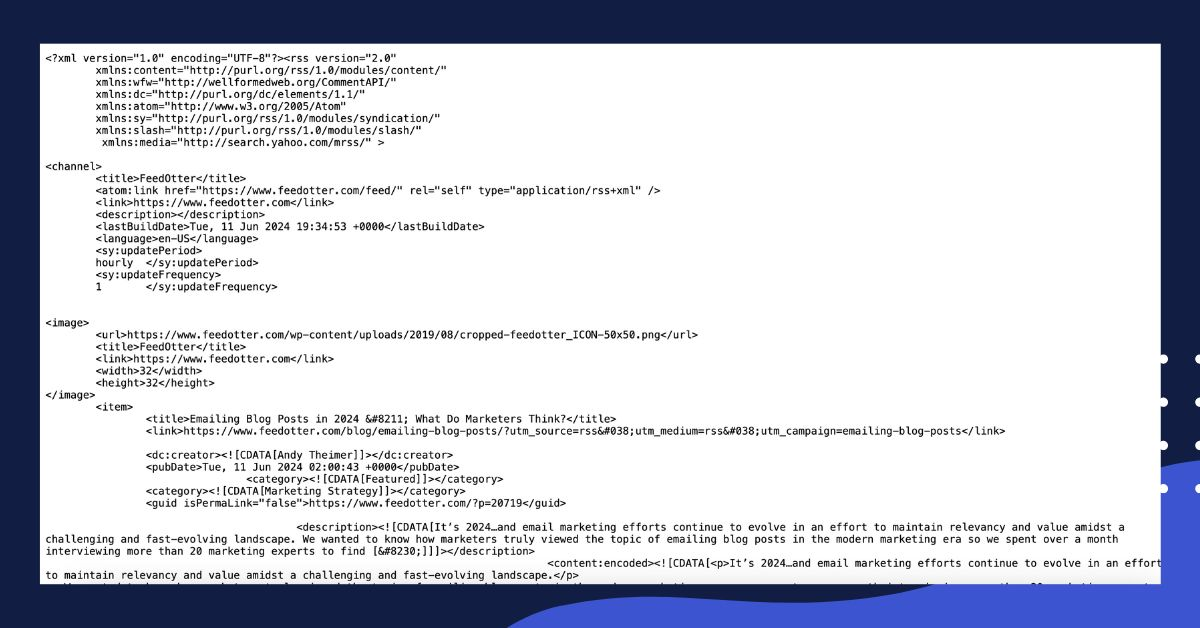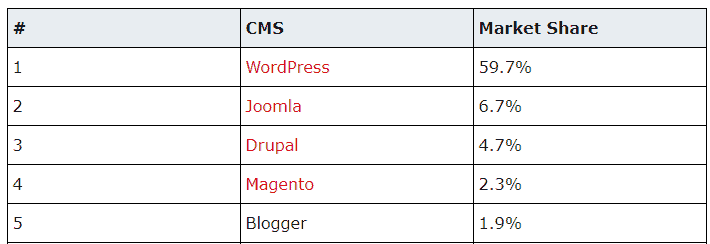4 Ways to Find An RSS Feed URL for Any Website

[ad_1]
Need to find an RSS feed URL for a website?
RSS feeds are useful for a variety of reasons, from staying up-to-date on everything that a website publishes to promoting your content via social media scheduling tools like Hootsuite, Buffer, etc. Using an RSS feed reader can help you stay updated on content from your favorite websites by organizing information in one place. RSS readers can be used to access feeds from different CMS platforms, making it easier to monitor multiple websites for new content in a single news aggregator.
Since it can be difficult to figure out the RSS feed URL for a website, we created this post to show you where they hide on some of the most popular website CMS platforms such as WordPress, Drupal, and Expression Engine.
Even if you aren’t sure what CMS technology a website is using these tips will help you better understand the world of RSS feeds and syndication, and help you find an RSS feed. So let’s get started.
What is an RSS feed?
A web feed, such as an RSS (Really Simple Syndication), is a simple text file of content on your website that automatically updates when new content is added. RSS feeds are universally supported in web standards and allow applications and users to follow updates from a website’s content.
What does an RSS feed look like?
RSS feeds are “Nodes” that show title, description, images, links, published date, etc. When you access
RSS feeds show title, description, images, links, published date, etc. The RSS icon helps users easily identify and access these feeds on websites. Here’s an example of the FeedOtter RSS feed.

Common RSS feed URLs
Many websites have a feed tag that can be appended to the base URL. You can often obtain a website’s RSS feed by appending the most common RSS links to the website’s URL:
- www.example.com/feed
- www.example.com/rss
- www.example.com/rss.xml
Some websites also include an RSS feed icon located near the social icons on a page. Clicking on this icon should take you to the RSS feed.
How to Find an RSS Feed on Popular Website Platforms
1. Find the RSS feed of a WordPress website
The WordPress CMS powers more than 43% of the internet, so if you’re trying to find an RSS feed of a website, your best bet is to assume the site is WordPress and try the following options:
Add “/feed/” to the end of the website URL
This is one of the most common RSS URLs, which can be found by taking a website’s URL https://www.feedotter.com and appending /feed/ so that it becomes https://www.feedotter.com/feed/.
Add “/rss/” to the end of the website URL
While not as common as “feed,” some sites will cough up the RSS feed URL when you append “RSS” to the end of the URL as well. If the first option doesn’t work, this is a good second tactic to try.
Find an RSS feed URL for a particular category or tag of content
By default, WordPress creates RSS feeds for everything, so you can also find RSS feeds for various categories and tags of content. Here is an example of how to find category and tag content on a WordPress site.
To find an RSS feed URL that contains only content from a specific category the URL would look like:
https://www.feedotter.com/blog/category/email-marketing/feed/
In this example, the category is ‘content-creation’ and the standard WordPress trick applies of “adding /feed/ to the end of things” gives you an RSS feed URL. You can use this same process to find an RSS feed for a tag.
Looking for more info? This article has even more great tips and references for where to find an RSS URL in WordPress. A highly recommended read.
2. Find an RSS feed via website source code
Looking at the HTML source code of a web page is another great way to quickly find the RSS feed. You can use an RSS reader to access the feeds found in the source code.
Let’s navigate to Hubspot’s marketing blog at https://blog.hubspot.com/marketing
Right-click on the website’s page, and choose Page Source. In the new window that appears, use the “find” feature (Ctrl + F on a PC or Command + F on a Mac), and type in RSS.
In this case, the correct RSS feed is https://blog.hubspot.com/marketing/rss.xml
Note: It is very common for websites to offer a second RSS feed full of blog comments. These are typically not useful, so be careful to skip any feed URLs that have the word ‘comments’ in their tag.
3. Finding an RSS feed URL for Joomla, Drupal, and Magento websites
While WordPress powers much of the web, there are several other CMS systems that are less RSS-friendly. A quick look at the market share of most used CMS platforms reveals that Joomla, Drupal, and Magento all power significant parts of the web.

Unfortunately, these CMS systems don’t enable RSS by default which means the site operator must explicitly create or enable an RSS feed that displays some or all of the site’s content. If you know your website is running Joomla, Drupal, or Magento your best bet is to examine the source code of key pages (homepage, blog page, newsroom) and search for “RSS.”
If you are reading this and working on your own website, you may need to ask your website developer to enable and/or create an RSS feed for you. Here are several steps to help you create custom RSS feeds should this be your objective:
How to Create an RSS feed URL for your Drupal 8 website
This great video walkthrough of how to create RSS feeds in Drupal is quite helpful and illustrates how to turn any bit of Drupal content into a custom RSS feed. To write RSS feeds in Drupal, you need to understand the history and evolution of the RSS format, including its origins, development of different versions, and the involvement of key individuals and groups.
Create an RSS feed URL for your Joomla website
For Joomla, it is recommended to install an RSS plugin such as gsRSSFeed. This plugin will make setting up an RSS feed in Joomla as simple as possible.
- Step 1: Go to the RSS Feeds section on Joomla.org.
- Step 2: Download gsRSSFeed or another plugin of your choosing.
- Step 3: Install gsRSSFeed via the Joomla installer.
- Step 4: Go to Components >> gsRSSFeed and click “New”
- Step 5: Fill in the information requested. Most of these fields are self-explanatory. You can happily just give your feed a name and click save.
Create an RSS feed URL for your Magento website:
Magento is an online storefront CMS used for eCommerce. Magento has some great RSS functionality built-in and excellent documentation on how to create custom RSS feeds, such as:
eCommerce RSS feeds are super useful and can be used to tell customers about new products, specials, or even automate product-filled newsletters using a tool like FeedOtter.
4. Find an RSS feed for Expression Engine websites
While not holding a significant percentage of market share, the CMS Expression Engine is one of the most popular among business websites.
These resources will help you set up RSS for ExpressionEngine:
5. Squarespace RSS Feeds
Squarespace standardizes their RSS feed URLs, so any RSS feed from a website built on Squarespace can be found by adding the full URL, followed by the page slug, and ending with ?format=rss
Key Takeaways
While most sites on the web have an RSS feed to help promote and syndicate their content, it is not always the case.
Hopefully, this guide provides some insight into where RSS feeds most commonly reside and how to set them up if you’re working on your own website and how to find an RSS feed.
[ad_2]
Source link


